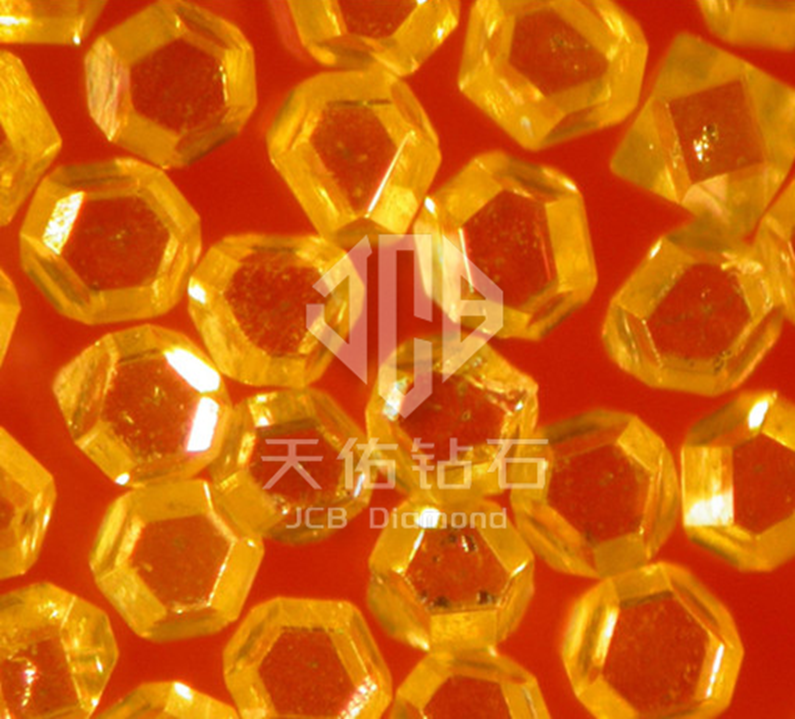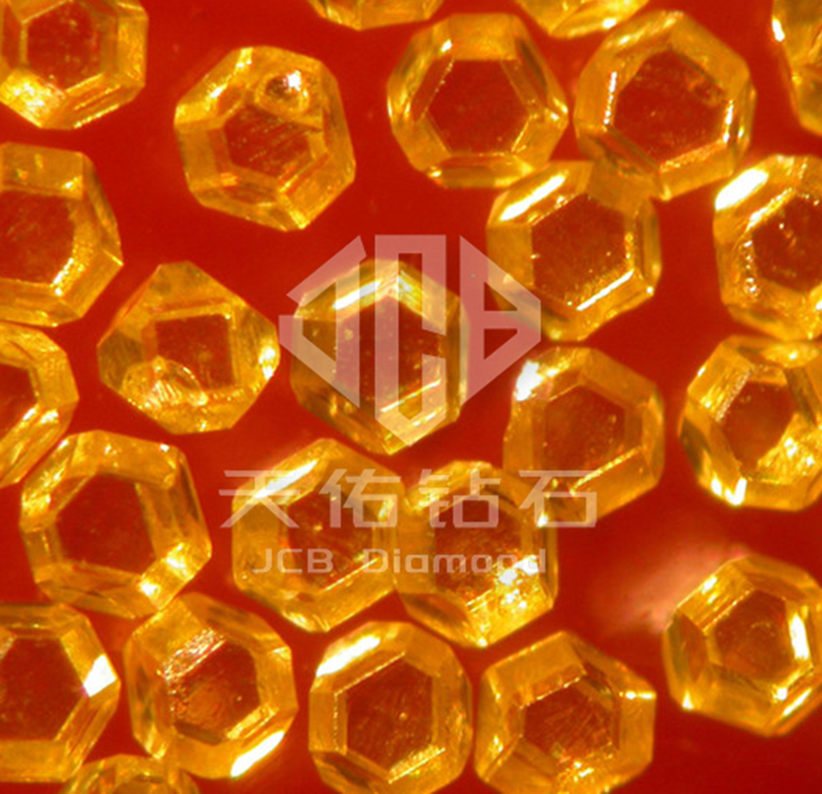There are two main production processes for artificial diamond rough materials: high temperature and high pressure method (HTHP) and chemical vapor deposition method (CVD). The process flow is briefly described as follows:
High temperature and high pressure method (HTHP)
1. Raw material preparation: Select high-purity graphite as the carbon source, usually requiring the purity of graphite to be above 99%. At the same time, select suitable metal catalysts, such as iron, nickel, cobalt, etc. and their alloys, to make catalyst sheets or catalyst powders of certain shapes and sizes.
2. Assemble the synthesis block: Assemble the graphite and catalyst in the synthesis chamber in a certain order and manner. Generally, the graphite is wrapped in the middle of the catalyst to form a specific structure to facilitate the reaction under high temperature and high pressure.
3. High temperature and high pressure synthesis: Put the assembled synthesis block into the high temperature and high pressure equipment, apply a high pressure of 5-6GPa through the hydraulic system, and use the heating device to raise the temperature to 1400-1600℃. Keep it under this condition for a period of time, so that the graphite is converted into diamond under the action of the metal catalyst.
4. Cooling and depressurization: After the synthesis reaction is completed, the temperature and pressure are gradually reduced to cool the material in the synthesis chamber to room temperature and the pressure is reduced to normal pressure.
5. Product separation and purification: The synthesized product is taken out of the synthesis chamber, and unreacted impurities such as graphite and metal catalyst are removed by chemical treatment, mechanical crushing and other methods to obtain artificial diamond rough material.

Chemical vapor deposition (CVD)
1. Substrate preparation: Select suitable substrate materials, such as silicon, molybdenum, tungsten, etc., and pre-treat the substrate by cleaning, polishing and other pretreatments to improve the deposition quality and adhesion of diamond on the substrate.
2. Gas mixing and introduction: Mix methane, hydrogen and other gases in a certain proportion and introduce them into the reaction chamber through a gas delivery system. Among them, methane is used as a carbon source, and hydrogen is used to adjust the reaction atmosphere and promote the growth of diamond.
3. Plasma excitation: In the reaction chamber, plasma is generated by microwaves, radio frequencies, DC arcs and other methods to dissociate and excite the mixed gas to form a plasma environment containing active particles such as carbon atoms and hydrogen atoms.
4. Diamond deposition and growth: Under the action of plasma, carbon atoms are adsorbed, diffused and deposited on the substrate surface, gradually growing into diamond crystals. The growth rate and quality of diamond can be controlled by precisely controlling parameters such as reaction temperature, gas flow, and plasma power.
5. Product collection and processing: After the deposition is completed, the substrate is removed from the reaction chamber, and the diamonds deposited on the substrate are collected and preliminarily processed, such as cleaning and cutting, to obtain artificial diamond rough material.
